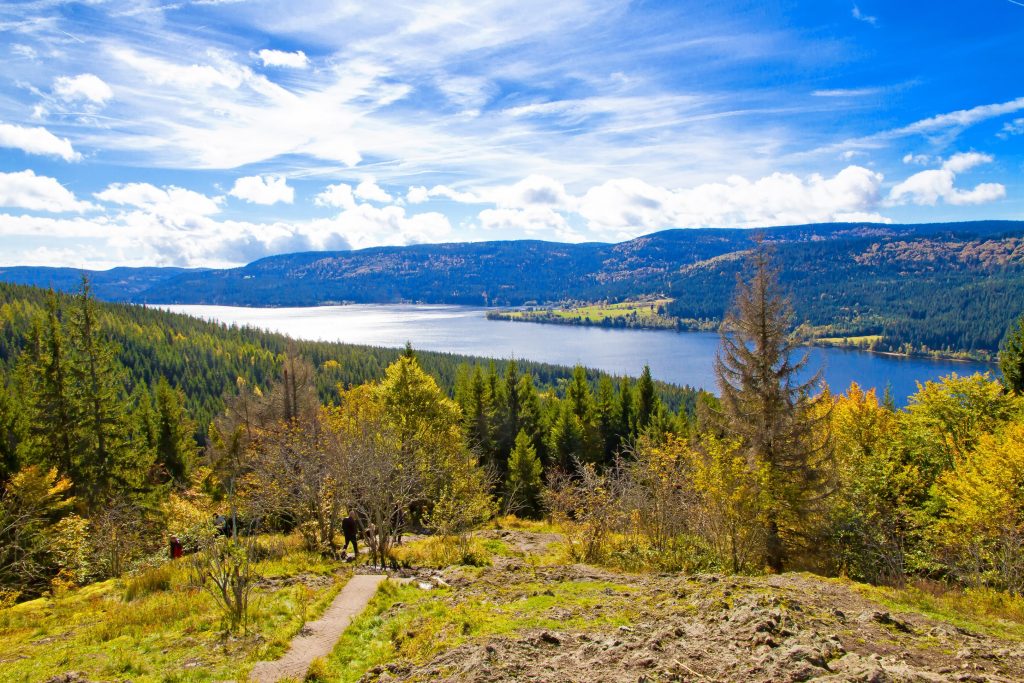
Black forest plus#
While the schedule changes daily, there are always special events running throughout the museum's season - from Easter to October, plus one weekend during the Advent season. The pom-pom hat worn by women in traditional Black Forest garb, for example, will tell you if a woman is single (red pom-poms) or married (black). The rivalries between the villages dating back centuries are also explained, as is the meaning of the clothing worn. Visitors following the well-marked path through the museum will come across well-plotted gardens explaining the utility of many plants native to the region and learn from guides dressed in traditional clothing about the particulars of animal farming in the forest. If you time your visit just right, you can see the sawing and grinding in action. In another, a water mill demonstrates the old-fashioned process of grinding grains into meal. In one, a mechanical saw chops away at logs a half-meter in circumference. In between the larger farmhouses are a smattering of outposts dedicated to the very particular tasks involved in self-sufficient living before the Industrial Revolution. Visitors can read plaques explaining antiquated cooking methods or loom weaving techniques while learning about the harshness of life in the remote forests.ĭemonstrations from before the industrial revolution

Inside, small displays give insight into life in the Black Forest villages from the 16th to 19th centuries. Vistiors to the Vogtsbauernhof outdoor museum can learn to make schnapps - the old-fashioned wayįrom outside, the thatched-roof building appears large and is nearly barn-like in its size the narrow staircases and low ceilings inside reveal, however, how claustrophobic life with an extended family here must have been.Įach building has its own unique characteristics and brief explanations about its significance in the village it was removed from. Stepping inside one, visitors can learn about 17th-century life in a self-sufficient farmhouse, where wood-burning stoves in the kitchen served as the main source of heat and offered protection against the harsh winters outside, while also providing sustenance. Originally conceived as a museum dedicated to the agriculture and farming communities in the thick forests of Germany's hilly Southwest, the museum cropped up as an assembly of old, historical buildings relocated from nearby villages. The Vogtsbauernhof Open Air Museum in Gutach tries to capture those differences in villages as it provides a glimpse into pre-20th-century life in the region.

Yet outside of the more modern towns, architecture was more pragmatic in nature as the thick forests that give the Black Forest its name also meant villages were relatively cut off from the outside world and residents there needed to be self-sustaining. It's a look often associated with Germany: slant-roofed houses with wooden beams and expansive balconies, red geraniums tumbling from railings onto the housing facades.


In the lake district south of Freiburg, architectural standards for new buildings not only have a height constraint but also demand the use of timber framing. In the larger cities, the aesthetics are homogenous.īaden-Baden in the northwestern - or High Black Forest - area is famous for its 19th-century French-style villas with filigreed balconies and pastel hues. Many of the stereotypes we associate as archetypically German are, in reality, native to the Black Forest area - like the cuckoo clock and the cherry liquor-infused Black Forest cake.īordering both Switzerland and France, the Black Forest region doesn't have an all-encompassing identity, however, having been influenced not only by the styles and mores of its border countries but also by the practicalities of life in the region. Located in Germany's southwestern most corner, the Black Forest is an expansive area rich in tradition.


 0 kommentar(er)
0 kommentar(er)
